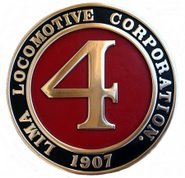Eric Olds, vice president of the Placerville and Sacramento Valley Railroad, graciously allowed me to share this update on track work on the western end of the Placerville Branch:Saturday,
Ethan Doty,
Jim Fryer,
Philip Rose and I commenced track rehabilitation on the initial operating segment for the Placerville and Sacramento Valley Railroad. Ethan, P&SVRR assistant roadmaster, ably instructed us newbies on the finer points of tie replacement, and we had a grand time.
Jim and I are both Cal Poly SLO grads. We discussed how the day's activities reminded us of Cal Poly's "Learn By Doing" slogan as we discovered successful and less then successful ways to wrestle old ties from the roadbed and insert relays.
One particularly satisfying aspect of the day for me was hearing the ring of the spike maul as new spikes were driven into place. I have a new appreciation for those who went before us constructing this portion of the line in 1863-1865 with simple hand tools and hard work, Our dedicated volunteers are willing to do the same to be a part of the historic reactivation of this grand line.
Eric Olds
 Ethan Doty
Ethan Doty pulls a new tie under the rail with a pair of tie tongs as
Jim Fryer digs out the trench with his hand. In the background,
Philip Rose prepares a trench for the next tie.
 Billy Bellas loads tree trimmings onto the Southern Pacific push car while Keith Berry supervises. The El Dorado Western Railway uses the speeder and push car to move tree trimmings from trackside down to our burn piles.
Billy Bellas loads tree trimmings onto the Southern Pacific push car while Keith Berry supervises. The El Dorado Western Railway uses the speeder and push car to move tree trimmings from trackside down to our burn piles. 




